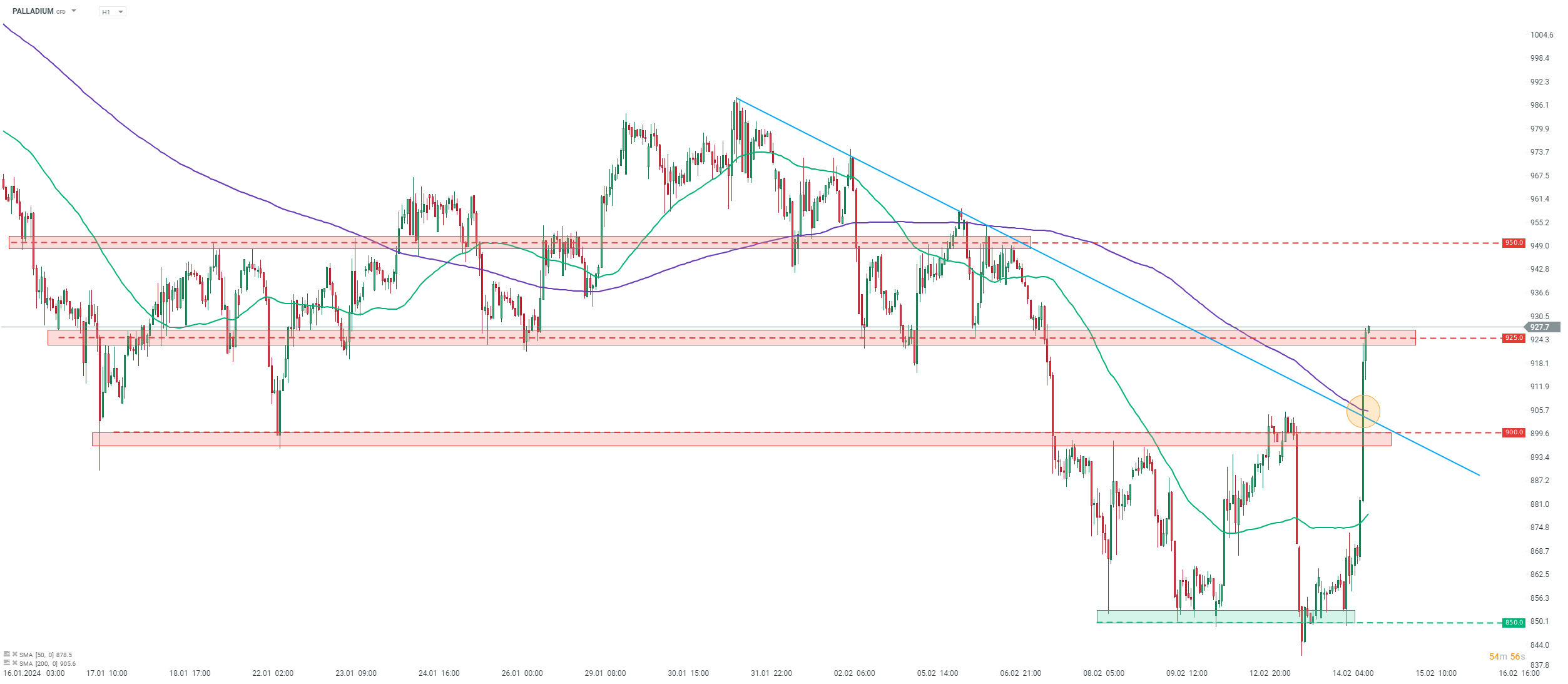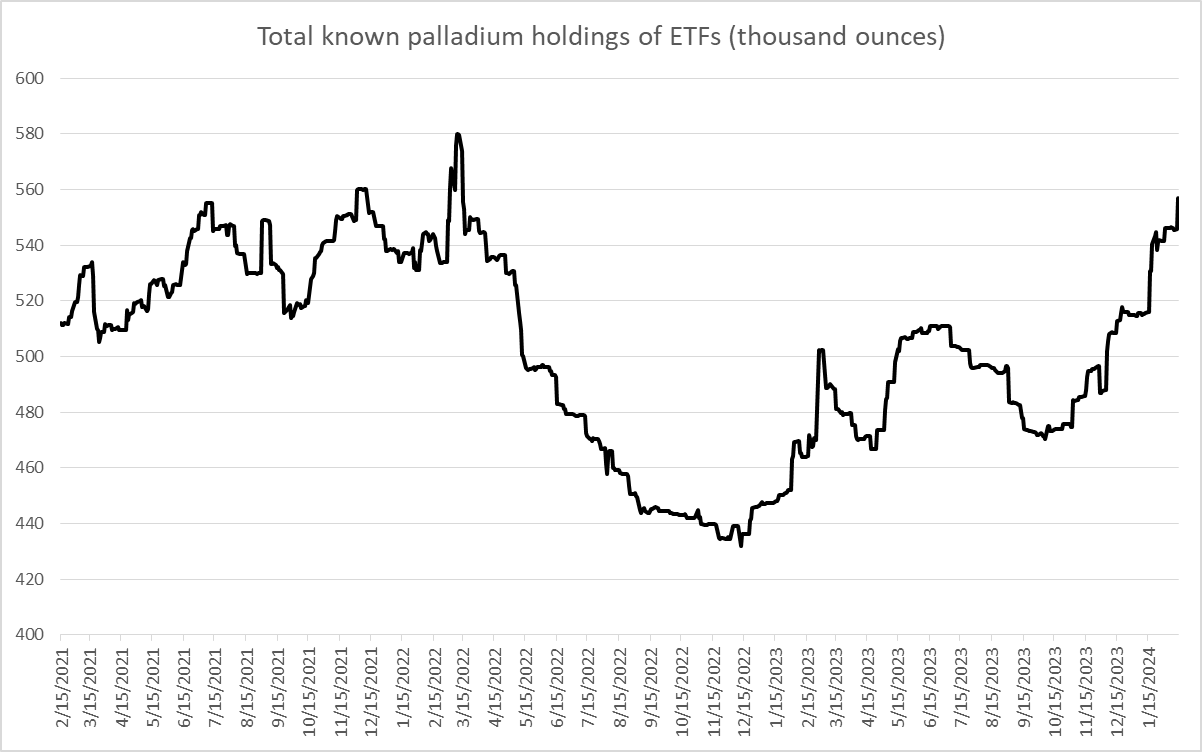A higher-than-expected CPI reading yesterday put pressure on precious metal prices, leading to GOLD price slumping below $2,000 per ounce for the first time since mid-December 2023. While GOLD deepens decline today with a 0.3% drop, other precious metals gain. SILVER adds 0.4% while PLATINUM trades 1.6% higher. However, PALLADIUM is top performer with a stunning over-7% gain at press time.
While gold and silver ETFs were net sellers yesterday during price slump, palladium holdings of ETFs increased by 2.1%! This is a massive single-day increase, bringing year-to-date increase to 8.2%. Gold holdings of ETFs are 2.7% year-to-date lower, while silver holdings are 0.3% lower than they were at the end of 2023. This strong increase in palladium demand from ETFs seem to be supporting today's price gains.
Taking a look at PALLADIUM chart at H1 interval, we can see that the price surged above the $900 per ounce price zone today with a strong bullish momentum. Gains continued with price breaking above downward trend line and 200-hour moving average (orange circle) later on. An attempt to break above the $925 resistance is being made at press time, with PALLADIUM trading at the highest level in a week. The next resistance zone to watch can be found in the $950 per ounce area.
 Source: xStation5
Source: xStation5
 Source: Bloomberg Finance LP, XTB Research
Source: Bloomberg Finance LP, XTB Research
Daily Summary: Powell pulls markets back up! 📈 EURUSD higher
WTI Crude Plunges Over 2% to Lowest Level Since May
Coffee Futures Soar 5%, Break 400 Cents per Pound
Technical look: Gold falls from the record high🔔


